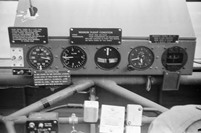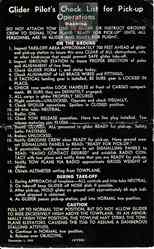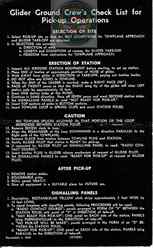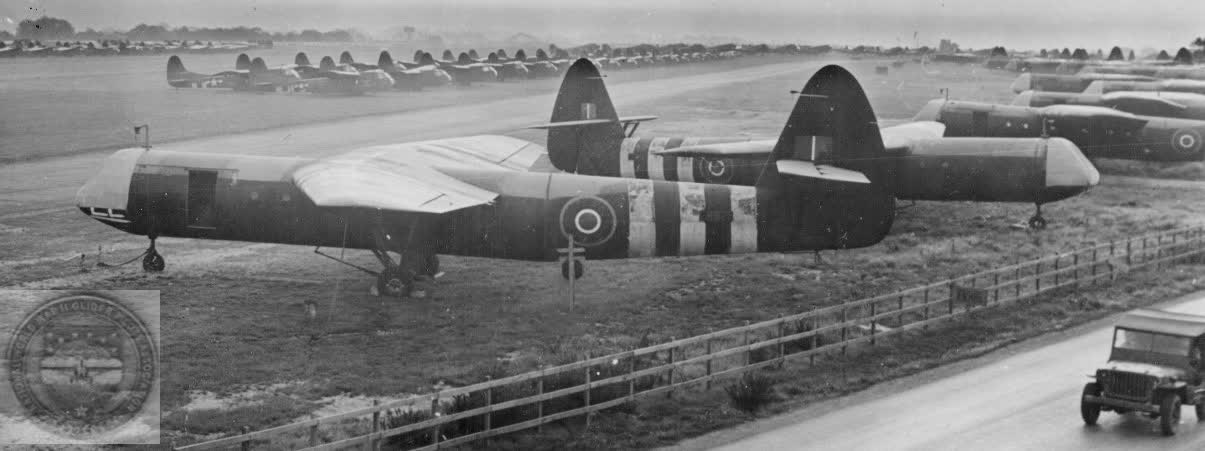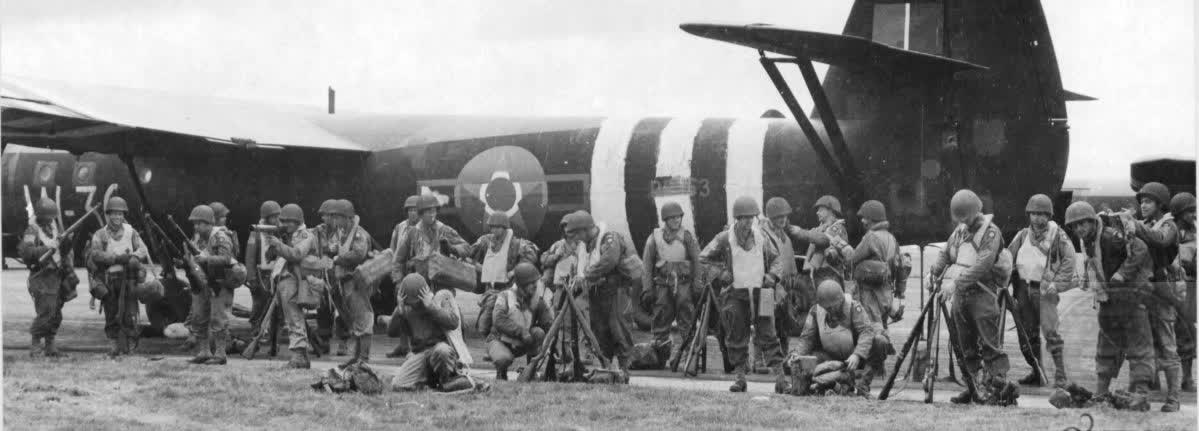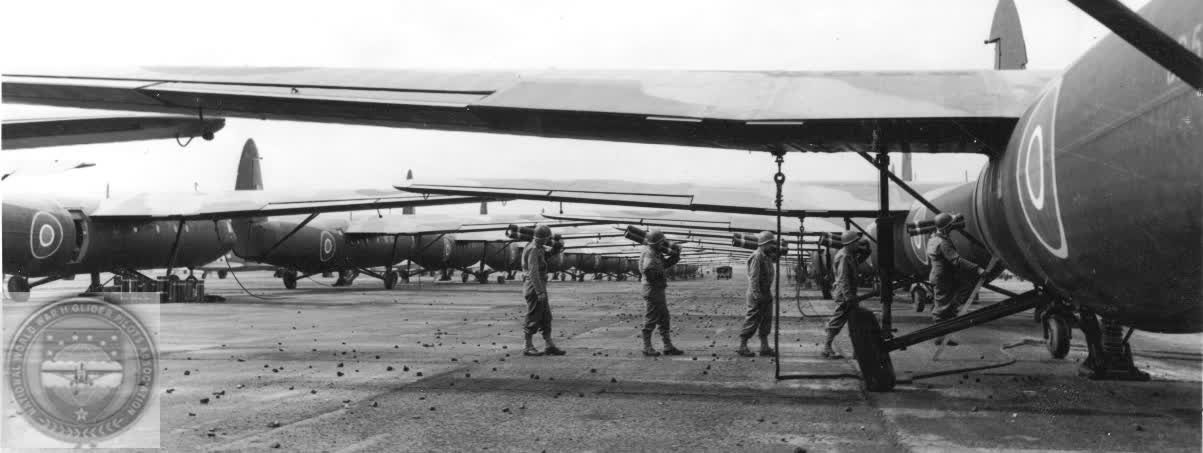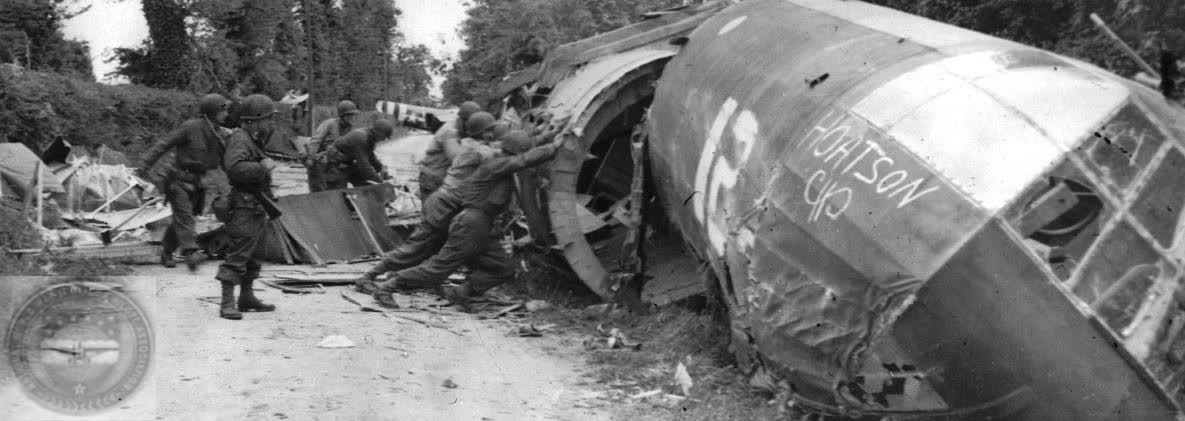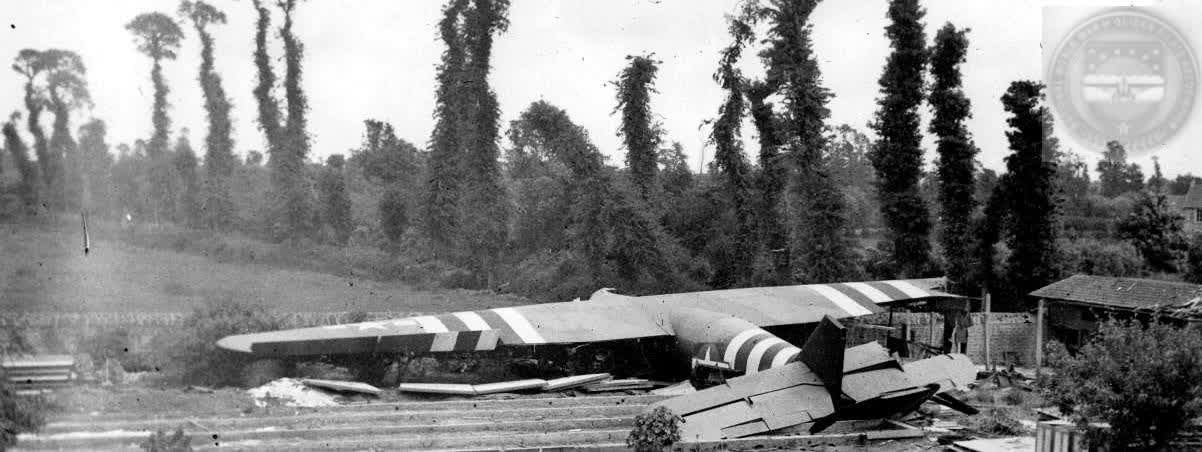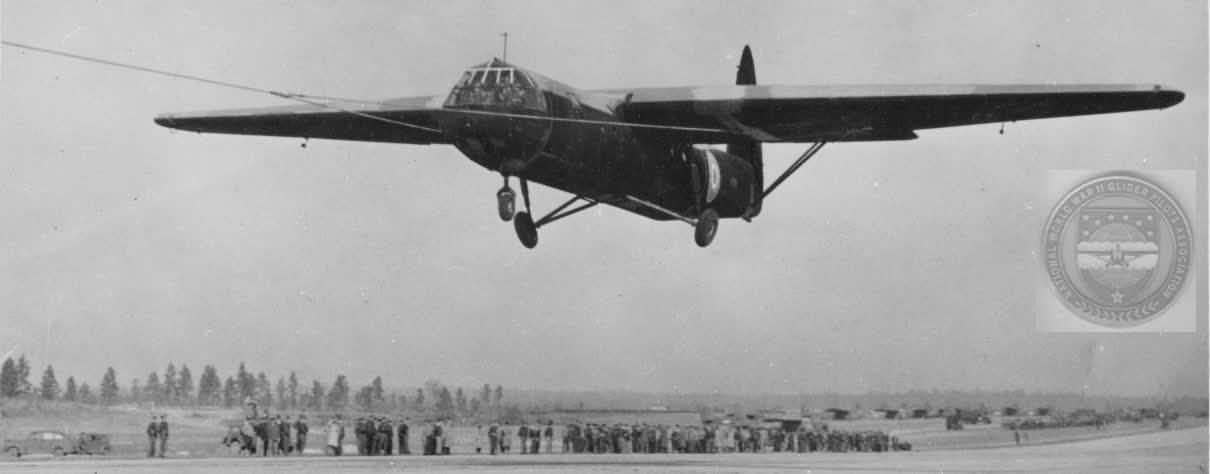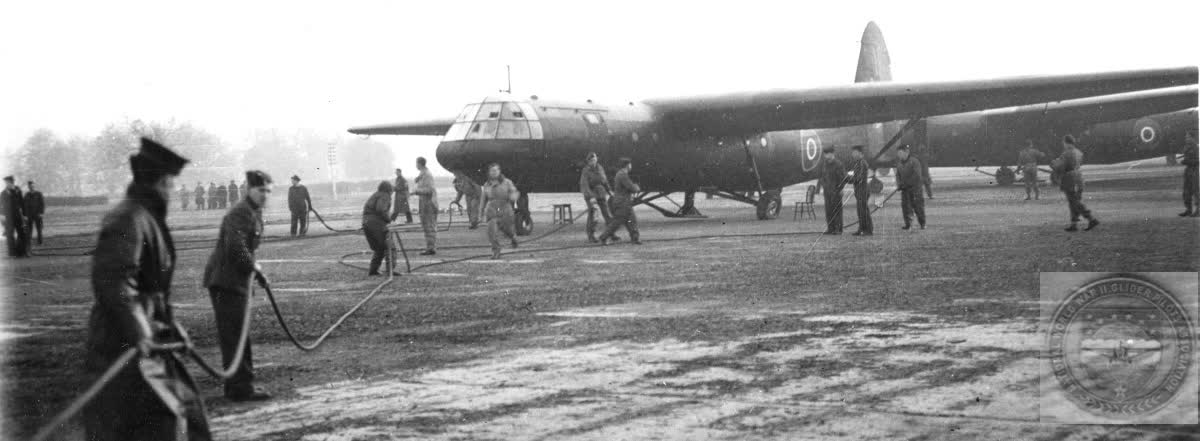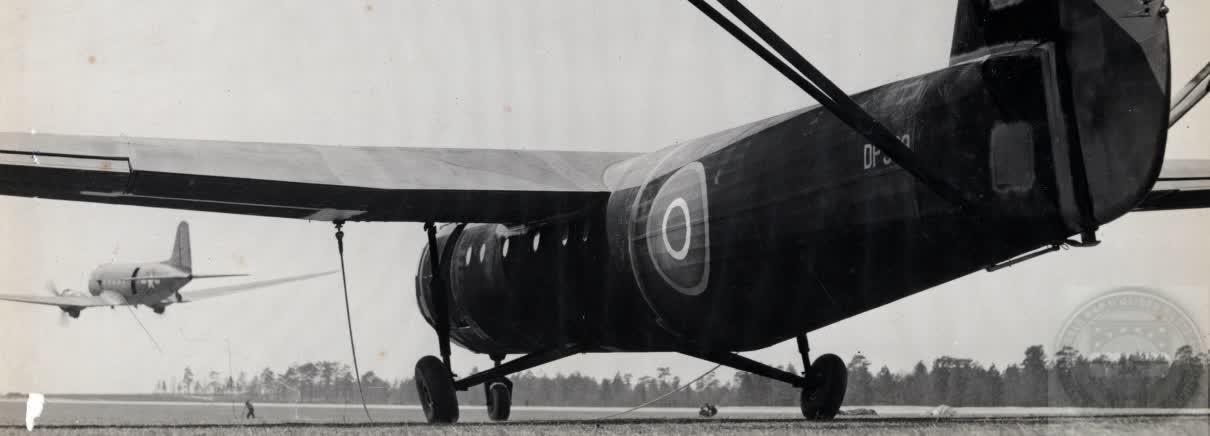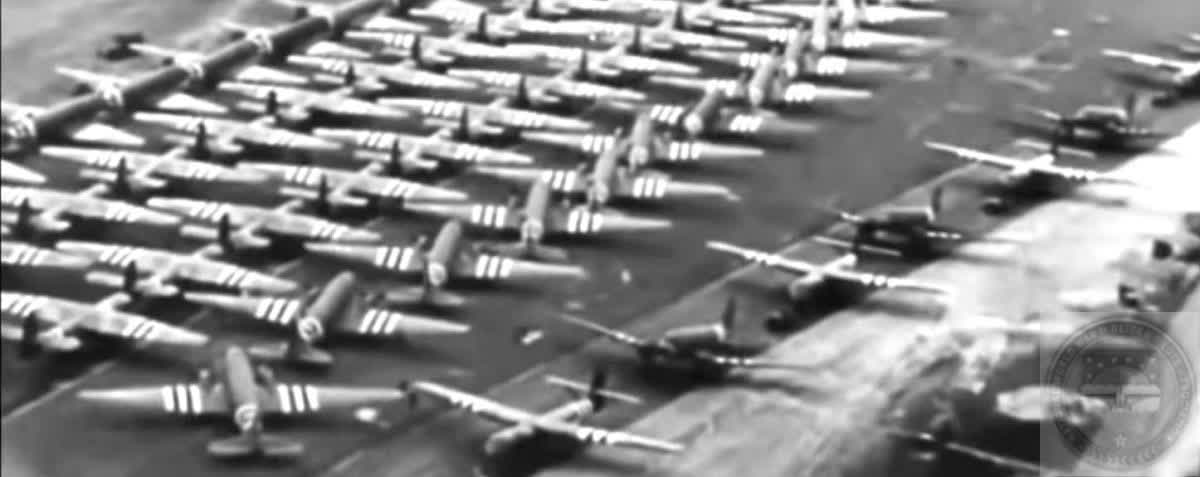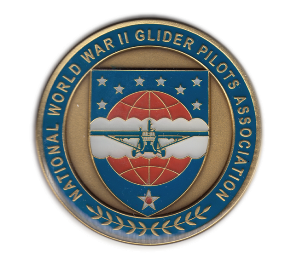THE HORSA GLIDER
The specialized task of conducting experimental flights and familiarizing advanced glider pilot students with the British Horsa glider was assigned to the 38th Troop Carrier Squadron. Lieutenant Julian r. Hall, whose training with the Horsa glider had been supervised b Major Michael C. Murphy, was selected to carry on this work. He continued in this capacity form November 1943, when the Squadron’s first Horsa was received, to 14 April 1944, when the Squadron was inactivated.1 .
One Horsa had been received prior to the Squadron's movement from Camp Mackall on 17 January 1944. Three more were received between that date and 15 February 1944. One per week was received thereafter, and by 14 April 1944 approximately 12 were on hand. .
Prior to 17 January, 1944, only a few advanced glider pilot students from each class were given familiarization. The availability of only one Horsa was a handicap. In addition, the classes were quite large and ground handling consumed a lot of time.
After 17 January, 1944, approximately 25 percent of the advanced glider pilot students in each of the last three classes were given familiarization. This consisted of a demonstration ride with each student flying on tow for a short period of time and the instructor explaining the flight from the time of release to the landing. A flap landing was usually accomplished and its advantages explained. No advanced glider pilot students were ever qualified as first pilots in the Horsa.
So far as is known, the Squadron was the first organization in I Troop Carrier Command to give familiarization in the Horsa.
Upon the basis of his experience, Lieutenant Hall made the following statements about the Horsa, but he was careful to state emphatically that these statements were strictly his own personal opinions:
The Horsa glider was designed in the early part of the war when not too much was known as to just what the ideal military glider would possess as far as characteristics are concerned. It is my belief that the general trend of thought was a one mission craft with not too much emphasis on aerodynamic efficiency. In other words, it was known that a military glider could not possess the characteristics of a high performance sail plane such as is used in competitive soaring contests. It had to be a rugged type craft, and thus aerodynamic efficiency was secondary. However, the British evidently bore in mind this need of efficiency to lessen the fuel consumption of the tug and increase its range. This is displayed in their craft in that the main gear was made jettisonable and a high lift coefficient in the wing design. The general design of the Horsa is clean, excepting of course the wind shield. Here they sacrificed efficiency in design for unimpaired visibility for the pilot and co-pilot.
Characteristic. The Horsa when flown in tow using a hemp tow line presents a problem in rough air. The hemp line having very little give or shock absorbing quality, transmits the force of vertical or horizontal accelerations of the tug directly back to the glider. This tends to offset the glider rom tow position, and constant control is necessary to maintain a good position. This condition may be partially eliminated by the use of nylon in the tow lines. Usually placed in as a leader from the brindle forward, this nylon leader in effect absorbs the forces of vertical horizontal acceleration within the nylon and thus contributes to a smoother flight. In free flight the Horsa glider is very pleasant to fly. Its control is smooth and positive. Pilots not familiar with the Horsa generally notice the absence of noise of the usual sound of rushing air. It has no vicious stall characteristics and its approach to stall is very noticeable. Its high angle of dive with full flaps is a definite advantage in landing over obstacles. The Horsa has its disadvantages also, as had any aircraft, mainly its unsatisfactory loading and unloading. Inability to control direction while on the ground rolling and its not too dependable pneumatic system are other disadvantage.
Comparison With CG-4A. It is my opinion tha the CG-4A is a more satisfactory assault glider. My reasoning here is that the CG-4A is more maneuverable than the Horsa. It has no pneumatic system that could foul and increase landing hazard. The CG-4A can be slipped to dissipate altitude along with the spoiler as an alternate. The Horsa depends solely upon flap action to dissipate excess altitude. The CGH-54A is more easily handled on a ground operation and for positioning prior to launching. It is more possible to retrieve by the glider pickup system. As for night operations, the CG-4A is more suitable in that it has no flaps to change the glide angle and increase landing hazards.
Comparison With CG-13A. It is my opinion that the CG-13A is capable of transporting greater loads than the Horsa. Larger equipment and ease of loading is another factor. Its nose loading is a definite advantage. It is in my opinion more study in construction throughout and is capable of withstanding greater landing loads in training than the Horsa glider. Its troop capacity is greater and it is equipped to be used as a paratroop transport as well as its feature of aerial delivery containers. To my knowledge, the Horsa is not so equipped. The CG-13A is also more adequately equipped for emergency exit. Escape doors are easily in reach of pilot and co-pilot. It can transport the much needed 105 mm Howitzer and crew to air in an airborne assault. The Horsa has an advantage in its visibility over the CG-4A and the CG-13A. This feature is very much a necessity to a successful operation.
--------------------
1 Lt. Julian R Hall graduated VI class 43-4 April 6, 1943. He had 400 hours as instructor on the Bragg-Knollwood-Lumberton-MacKall-Maxton circle. He also flew demonstrations and tactical check flights in: - CG-4A
- CG-4A with Auto-tow
- CG-4A with Auto pilot
- CG-4A with Capt. Chuck Chase's braking plow after it was built and tested at CCAAF
- YCG-13A
- CG-13A
- CG-13A with Auto pilot
He instructed glider pilots in snatching the CG-13A and CG-4A. After the 18 "instructional" Horsa arrived in the US in Oct-Nov 1943 he was checked out in the Horsa by Mike Murphy on 11/13/1943. With CCAAF test pilot Chet Decker flying the snatch tug, Julian flew the Horsa in the first snatch of a Horsa on 2/18/1944. In June-July 1945 after L-M was shut, Julian was sent to Wright/CCAAF as a test pilot. At CCAAF, July and after, he flew the XCG-10A, XCG-14A, XCG-15A, CG-15A and CG-13A. For the big Air Show at Wright Field, Oct 20-21, 1945 he flew the XCG-14A and his wife Grace was copilot. On Oct 29, 1945 after the air show, he flew the XCG-10A from Wright Field back to CCAAF. That was the last (military) entry in his log so he must not have been involved in the November 1945 evacuation of CCAAF by glider test when they flew everything not permanently attached to Freeman Field in Indiana to make way for the incoming All-Weather Flying operation at CCAAF in 1946.
2 Lt Colonel Michael C Murphy. Quoted from the 38th Troop Carrier Squadron Historical report: Colonel Murphy put on an exhibition of stunt flying in the glider. He looped the glider; put it on its back; made stalls and figure eights, an landed it on one wheel, holding the wing tip off the ground by about six inches. He made the 38th Troop Carrier Squadron the glider Squadron. [A0974 915]. In March 1943 Capt. Murphy was assigned as the Director of flying Training and was Lt. Col. Curry's S-3 Officer. By June 1943 Murphy had been promoted to Major. During that summer, after the demise of Sicily, Murphy was given the opportunity by Gen. Arnold to demonstrate the strong points of the glider program. This became known as the Hap Arnold Maneuver Under the 434th Troop Carrier Group Murphy led the 1st glider wave into Normandy. The glider crashed into the hedge at a considerable speed. Copilot 2nd Lt Butler was killed in the crash along with Assistant Division Commander (ADC) of the 101st Airborne Division, General Don Pratt. The Pilot Lt. Col. Mike Murphy received wounds to the leg. Injured on landing, broken leg. 22 June 1944 letter to Cissie from C.J.Bayne states Murphy received burn on left leg and simple fracture on right leg by a shell burst
3 This chapter is based upon an interview with Lt. J. R Hall, who was in charge of all Horsa training in the 38th Troop Carrier Squadron.
SOURCES
National WWII Glider Pilot Database.
U.S. Air Force Historical Reseach Agency. IRISREF A0974 38th Troop Carrier Squadron.
|
